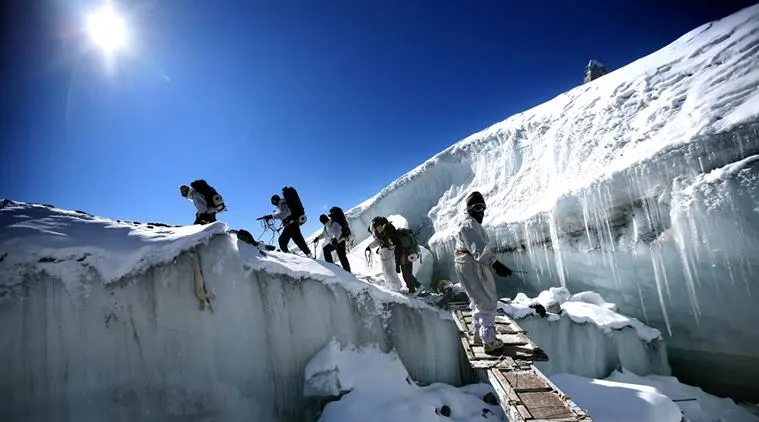Operation Meghdoot

- 15 Apr 2024
Why is it in the News?
India commemorates 40 years since the launch of Operation Meghdoot, a critical mission to secure the strategic heights of the Siachen glacier, acknowledged as the highest battlefield in the world.
About Operation Meghdoot:
- Operation Meghdoot was the codename for the Indian Army operation to take full control of the (Siachen Glacier in Ladakh).
- It was launched in 1984 and it was unique as it involved the first assault on the world's highest battlefield.
- This operation was launched on April 13, 1984, by the Indian Army and Indian Air Force (IAF), marking a pivotal moment in securing the Siachen Glacier, a strategically crucial region dominating Northern Ladakh.
- The operation involved airlifting Indian Army soldiers, with IAF helicopters operating in the area since 1978, including the first landing of an IAF helicopter on the glacier in October 1978.
- The need for Operation Meghdoot arose due to Pakistan's cartographic aggression in Ladakh, allowing foreign mountaineering expeditions in Siachen.
- Intelligence inputs about impending Pakistani military action prompted India to secure strategic heights on Siachen, deploying troops via airlifts and air-dropping supplies to high-altitude airfields.
What was IAF's Role and Evolution in Operation Meghdoot?
- The IAF played a crucial role in supporting Operation Meghdoot, initially focusing on transport and helicopter aircraft for troop and material transport.
- Gradually, the IAF expanded its role, deploying fighter aircraft like the Hunter, MiG-23s, and MiG-29s, operating from high-altitude airfields at Leh and Thoise.
- This expanded role included fighter sweeps and simulated strikes over the glacier, boosting morale and deterring adversaries.
- Operating on the highest battlefield globally, IAF helicopters are the lifeline for Indian troops, providing crucial support in emergencies, logistics supply, and evacuating the sick and wounded from the glacier.
- As the Indian Army celebrates 40 years on the Siachen Glacier, it reflects not only on the progress made in technological advancements and logistical improvements but also on the sacrifices and dedication of its personnel.
- 'Operation Meghdoot' stands as a testament to India's commitment to safeguarding its borders and ensuring the well-being of its troops in one of the world's most challenging terrains.
About Siachen Glacier:
- The Siachen Glacier, situated in the Eastern Karakoram range of the Himalayas, is located just northeast of Point NJ9842, where the Line of Control (LOC) between India and Pakistan ends.
- Administered by India since Operation Meghdoot in 1984, the glacier spans from northwest to southeast, originating at the Indira Col West and descending from an altitude of 6,115 meters to 3,570 meters.
- As the second-longest glacier in the world's non-polar areas, the Siachen Glacier is surpassed only by Tajikistan's Fedchenko Glacier.
- It lies south of the significant drainage divide separating the Eurasian Plate from the Indian subcontinent in the glaciated Karakoram region, sometimes referred to as the "Third Pole."
- The Nubra River finds its source in the Siachen Glacier, highlighting the glacier's ecological importance.
